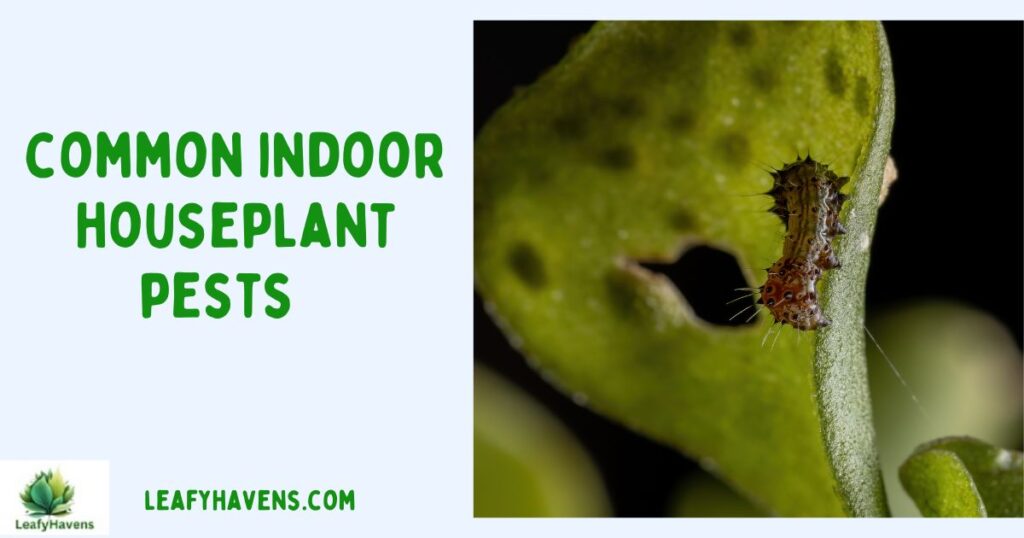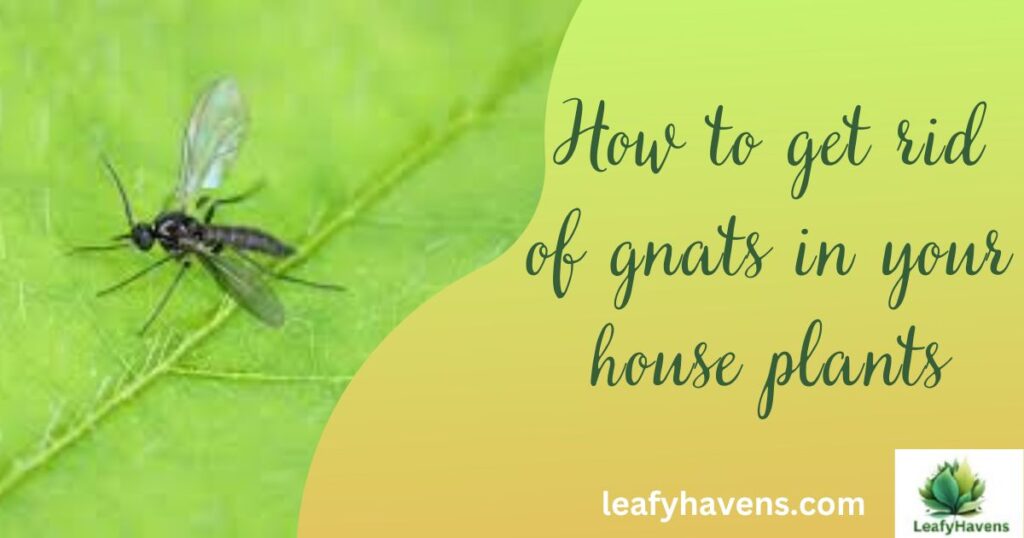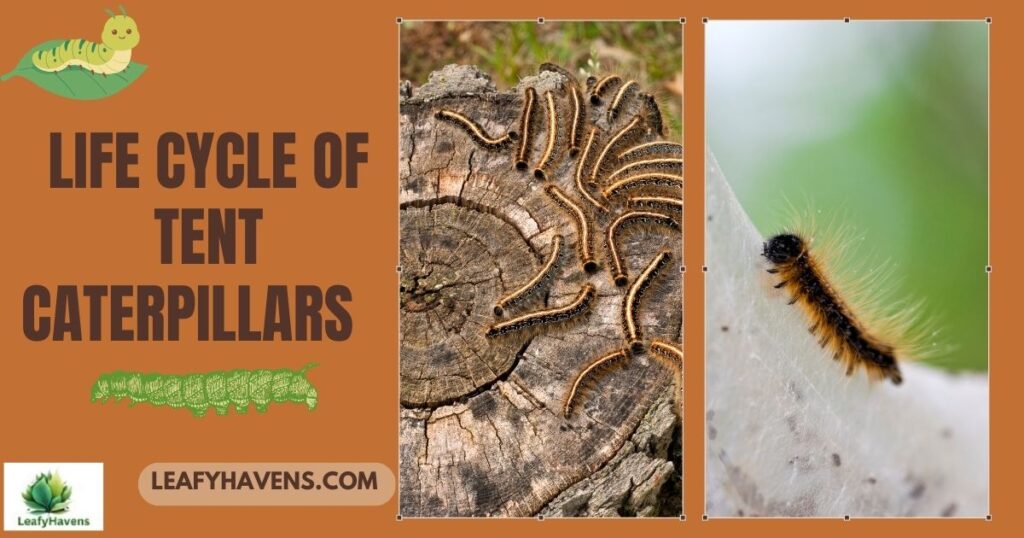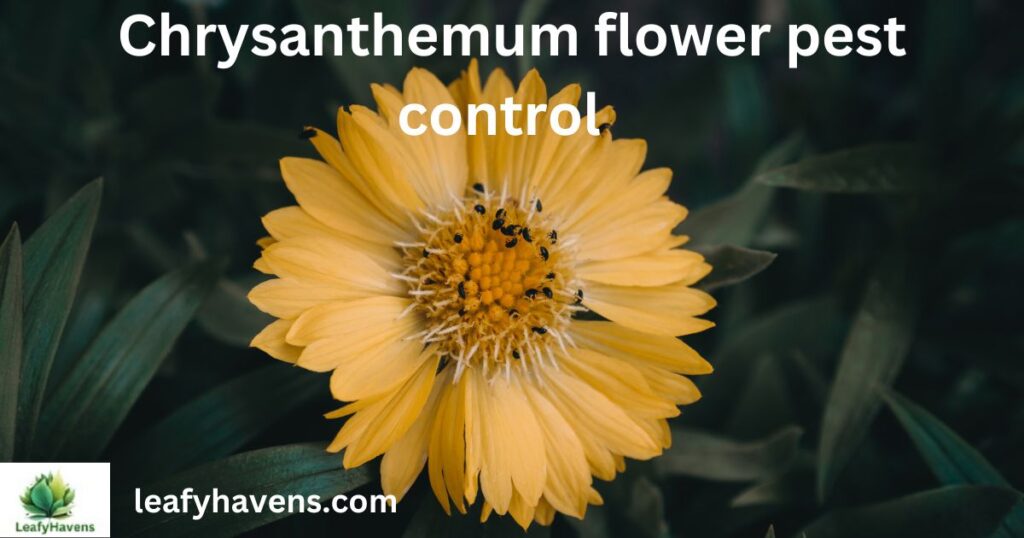Although indoor houseplants can add vitality and vigour to any area, they can also draw pests. Because these intruders can do rapid harm to your plants, it’s critical to detect common indoor houseplant pests early on. We’ll go over the various pests that might damage your plants in this post, along with how to identify them and prevent or get rid of them. You can safeguard your plants and restore their health with the help of this guide, so don’t worry about common indoor houseplant pests.
Types of Common Indoor Houseplant Pests
There are a variety of common indoor houseplant pests that can damage your plants. Some are easily noticeable, while others can be more challenging to detect until they’ve caused significant harm. Here’s a breakdown of the most frequently seen pests:
1. Aphids
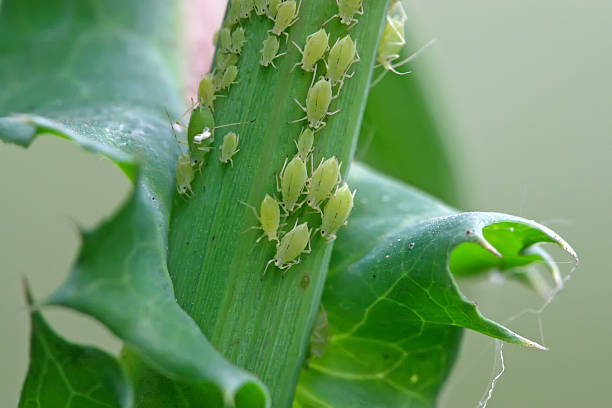
Aphids are tiny, soft-bodied insects that typically appear on the leaves, stems, and buds of plants. They come in various colors, including green, yellow, and black. Aphids feed by sucking sap from the plant, which can cause leaves to curl and yellow. These pests often leave behind a sticky substance known as honeydew, which can attract mold.
How to Get Rid of Aphids:
- Soap and water: Mix a solution of mild dish soap and water to spray directly on the affected areas. This will suffocate the aphids.
- Neem oil: Apply neem oil to treat aphid infestations. It works as both a repellent and a pesticide.
2. Spider Mites
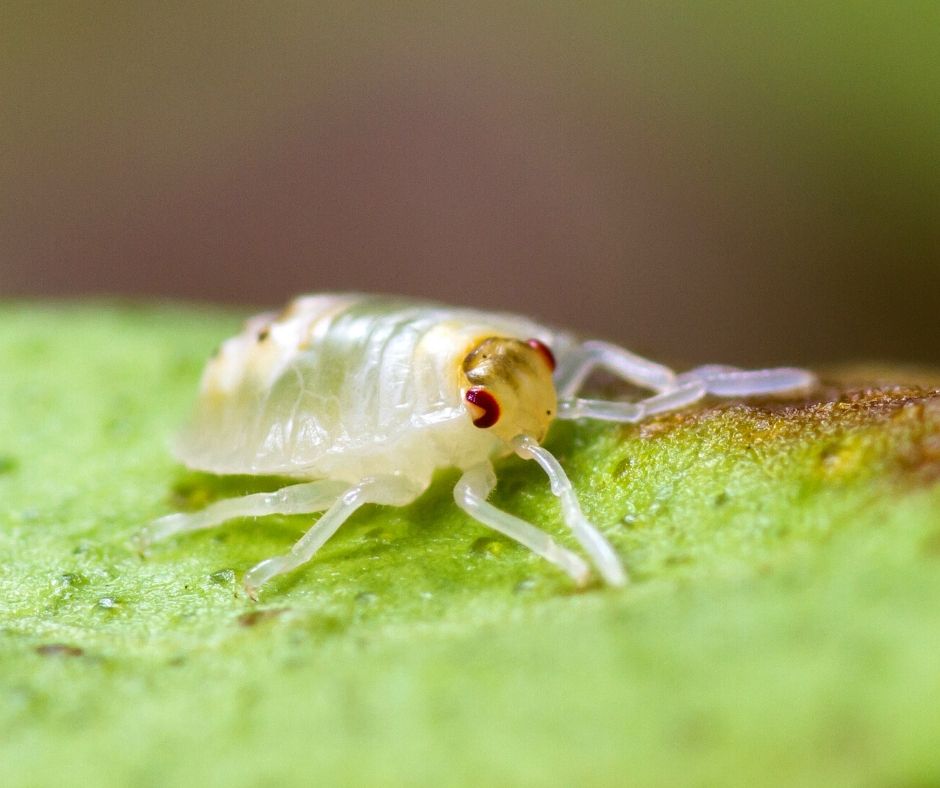
Spider mites are microscopic pests that thrive in dry, dusty environments. They are often too small to see without a magnifying glass but leave behind visible signs such as tiny webs on the undersides of leaves. A spider mite infestation can cause yellow or stippled spots on leaves and, if left untreated, can lead to leaf drop.
How to Get Rid of Spider Mites:
- Increase humidity: Spider mites prefer dry conditions, so increasing humidity around your plants can deter them.
- Rinse your plants: Use a strong stream of water to wash the pests off the leaves.
- Insecticidal soap: Apply an insecticidal soap or neem oil to get rid of spider mites.
3. Mealybugs
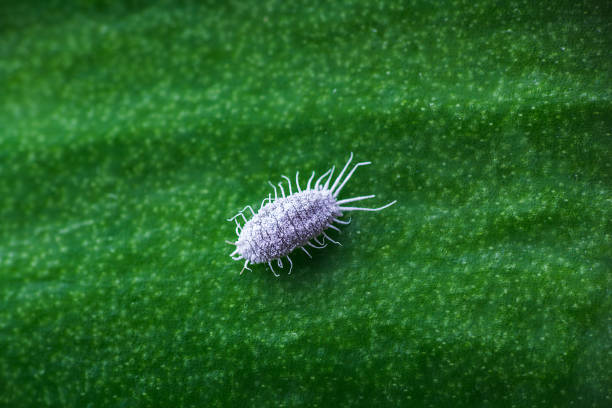
Mealybugs are small, white, cotton-like insects that can often be found in the crevices of your plants. They suck out sap from the leaves and stems, weakening your plants. Like aphids, they also secrete honeydew, which can lead to the growth of black mold.
How to Get Rid of Mealybugs:
- Isolate affected plants: To prevent the spread, move the affected plant away from others.
- Rubbing alcohol: Soak a cotton ball in rubbing alcohol and dab it directly onto the mealybugs. This will kill them on contact.
- Neem oil: A solution of neem oil can also be effective against mealybugs.
4. Fungus Gnats
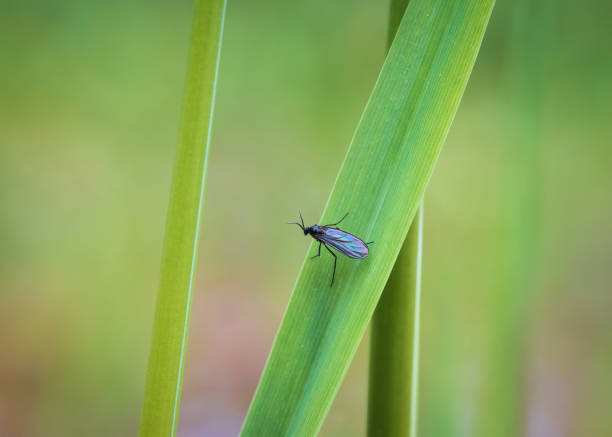
Fungus gnats are small, dark flies that are often seen flying around the soil of indoor plants. The larvae of fungus gnats feed on organic matter in the soil, but they can also damage plant roots, leading to weak and stunted growth. These pests thrive in overwatered environments.
How to Get Rid of Fungus Gnats:
- Let the soil dry out: Fungus gnats thrive in moist soil, so allow the top layer to dry out between waterings.
- Yellow sticky traps: Place yellow sticky traps near your plants to capture adult gnats.
- Diatomaceous earth: Sprinkle diatomaceous earth on the soil surface to kill larvae.
5. Scale Insects

Scale insects are small, oval-shaped pests that attach themselves to the stems and leaves of plants. They can be hard to spot because they often look like small bumps or lumps. Like aphids and mealybugs, they feed on plant sap, weakening the plant and leaving behind honeydew.
How to Get Rid of Scale Insects:
- Scrape off scales: Use a soft brush or a cloth to gently scrape the scales off your plant.
- Insecticidal soap: Apply insecticidal soap to the affected areas.
- Neem oil: Neem oil is effective in treating scale infestations.
6. Whiteflies
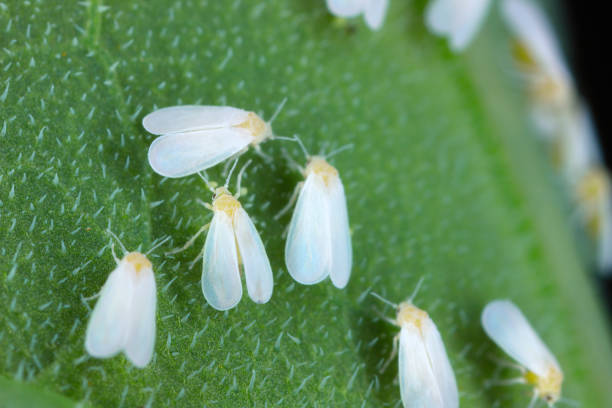
Whiteflies are tiny, flying insects that resemble small moths. They tend to congregate on the underside of leaves, feeding on plant sap. Whiteflies can cause yellowing leaves and a weakened plant. Like aphids, they secrete honeydew, which can cause mold to grow.
How to Get Rid of Whiteflies:
- Insecticidal soap: A mixture of insecticidal soap can help control whitefly infestations.
- Yellow sticky traps: Place yellow sticky traps around your plants to capture flying whiteflies.
- Neem oil: Neem oil can also be effective against whiteflies.
7. Thrips
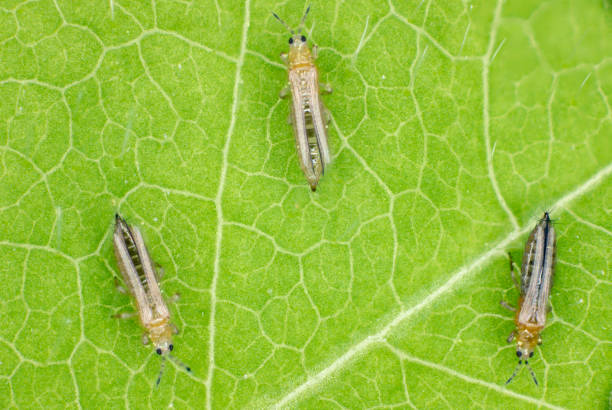
Thrips are tiny, slender insects that can be difficult to spot with the naked eye. They feed on the plant’s sap and cause silver or white streaks on leaves. Thrips can also transmit plant diseases. These pests tend to hide in the crevices of the plant, particularly along the edges of leaves and flowers.
How to Get Rid of Thrips:
- Insecticidal soap: Apply insecticidal soap or neem oil directly to the plant, especially to the undersides of the leaves where thrips tend to hide.
- Sticky traps: Use blue sticky traps, as thrips are more attracted to the color blue than yellow.
- Predatory insects: Introduce natural predators like predatory mites or nematodes to help control the thrips population.
How to Prevent Common Houseplant Pests
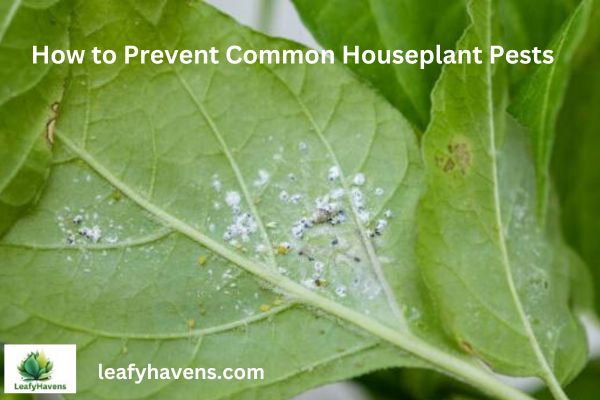
Prevention is always better than cure when it comes to common houseplant pests. Here are some steps you can take to protect your plants:
1. Inspect New Plants Carefully
When bringing new plants into your home, always inspect them carefully for pests. Look for signs such as discolored leaves, webbing, or visible insects. It’s a good practice to quarantine new plants for a few weeks before placing them with your other plants to ensure they don’t carry pests.
2. Maintain Plant Health
Healthy plants are less susceptible to pests. Ensure your plants are receiving the right amount of light, water, and nutrients. Regularly check for signs of stress, as pests often target weak or unhealthy plants.
3. Keep Your Home Clean
Regularly clean your plants’ leaves and surrounding area to remove dust and debris. A clean environment discourages pests from settling in.
4. Proper Watering Practices
Overwatering can create an environment where pests like fungus gnats thrive. Ensure your plants have well-draining soil and avoid letting them sit in excess water.
5. Use Natural Pesticides
If you notice a pest problem, consider using natural treatments like neem oil, insecticidal soap, or diatomaceous earth. These options are less harmful to the environment and beneficial insects.
Step-by-Step Guide to Treating Common Indoor Houseplant Pests
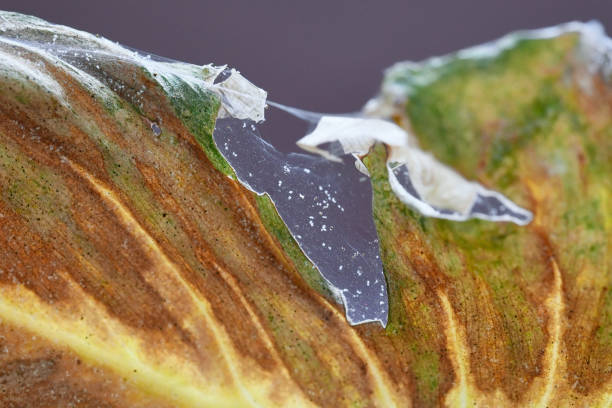
If you’ve identified a pest infestation, follow these steps to help your plants recover:
Step 1: Identify the Pest
Before taking action, you need to correctly identify the pest causing the damage. Check your plant closely for any signs like webs, sticky residues, or unusual markings on the leaves.
Step 2: Isolate the Plant
To prevent the pests from spreading to other plants, isolate the affected plant in a separate area.
Step 3: Choose Your Treatment Method
Depending on the type of pest, you can use a variety of methods to treat the infestation. For small-scale infestations, manual removal or a natural remedy like neem oil may be sufficient. For larger infestations, you may need to use stronger treatments like insecticidal soap.
Step 4: Apply Treatment
Carefully apply the treatment according to the instructions on the label. Be sure to cover both the upper and lower sides of the leaves, as well as the stems and soil.
Step 5: Monitor Progress
Check the plant regularly for signs of improvement. If pests persist, you may need to reapply the treatment.
Step 6: Prevent Future Infestations
Once the pests are gone, take steps to prevent future problems by maintaining healthy plants, inspecting new plants, and keeping your home clean.
What to Do if Common Houseplant Pests Return?
Even with the best prevention methods, pests may still return. If this happens, it’s important to act quickly. Use stronger treatments like horticultural oils or systemic insecticides. You can also introduce beneficial insects, such as ladybugs, to help control pest populations naturally.
Final Thoughts on Common Indoor Houseplant Pests
Protecting your indoor plants from common houseplant pests is essential for keeping them healthy and thriving. You can avoid harm and preserve plant health by being watchful, spotting pests early, and applying efficient treatments like neem oil or insecticidal soap. Infestation risk is also decreased by routine maintenance, appropriate watering, and plant isolation. You can enjoy colourful, pest-free plants all year long if you take the proper care of them!
FAQs About Common Indoor Houseplant Pests
1: What are the most common indoor plant pests?
The most common indoor plant pests include aphids, spider mites, mealybugs, fungus gnats, scale insects, and whiteflies.
2: How can I prevent houseplant pests?
To prevent pests, inspect new plants for signs of infestation, maintain plant health, keep your home clean, and avoid overwatering your plants.
3: How do I treat pests on my houseplants?
Treatment methods for pests include using insecticidal soap, neem oil, rubbing alcohol, and diatomaceous earth. Always follow the instructions carefully.
4: Are there any natural ways to get rid of plant pests?
Yes, natural treatments like neem oil, insecticidal soap, and increased humidity can help control pests without harming your plants or the environment.
5: How do I know if my plant has a pest infestation?
Signs of a pest infestation include discolored or curled leaves, sticky residue (honeydew), webs, or visible insects on your plant.

